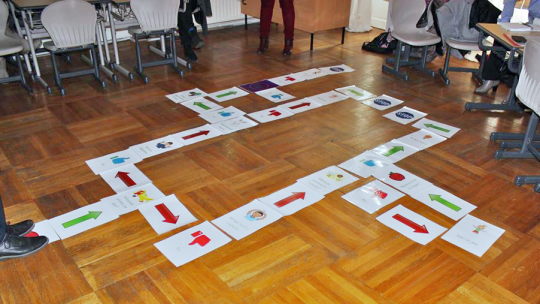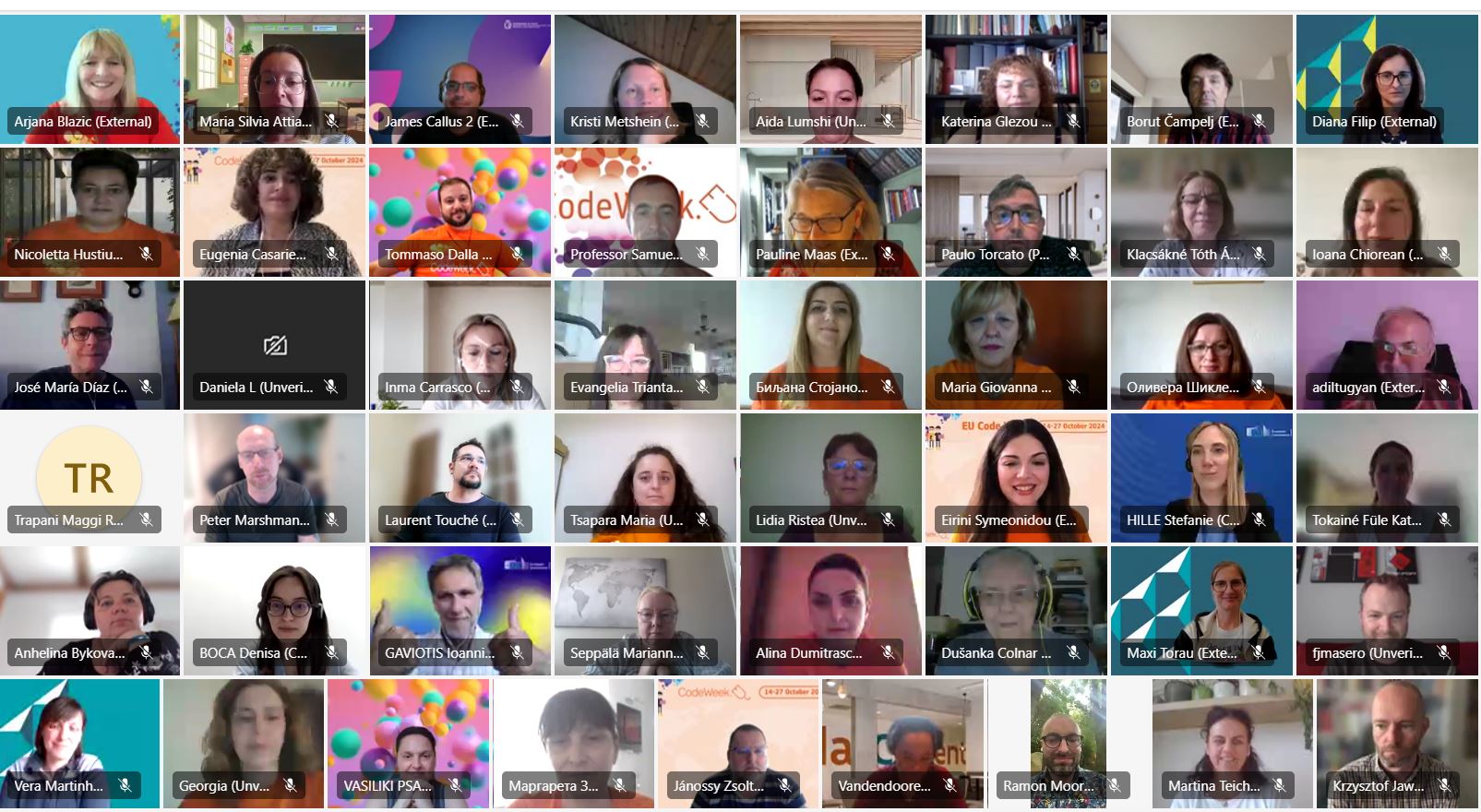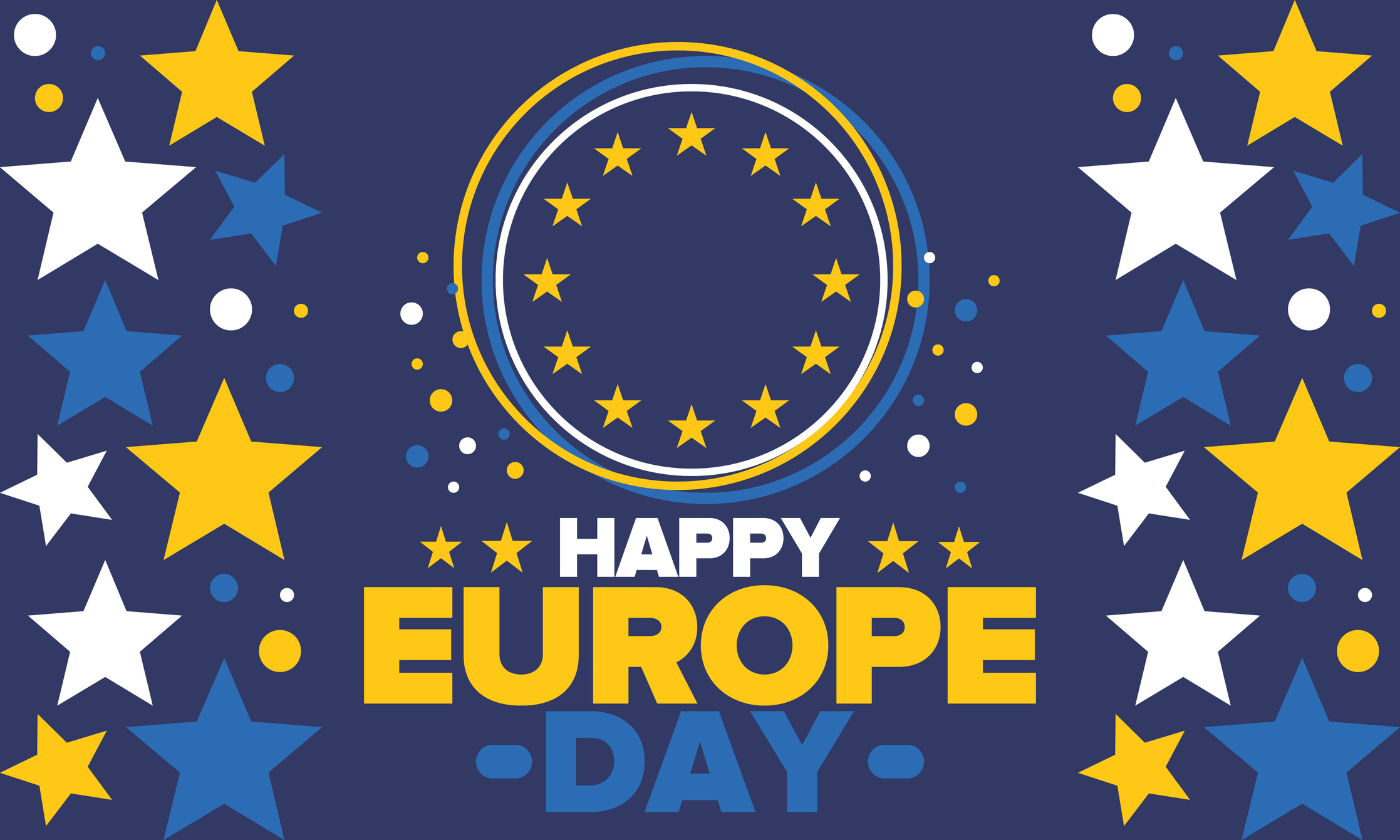16 EU Code Week activities to inspire your next lesson in coding
Publication date: May 16, 2020
by Dorina Marin, EU Code Week Leading Teacher from Romania
My involvement in the EU Code Week campaign was a real challenge. I started by carrying out different small-circle activities with pupils, students and teachers, in
the classroom. These eventually turned into workshops in high schools and universities or in regular meetings with teachers to exchange experiences. Every meeting was received with great enthusiasm by the participants due to the ingenuity and novelty of the activities and due to the way in which these activities can be implemented and adapted to suit students of all grades. Considering their impact on the participants, I want to share with the community some of the activities that were received with a lot of enthusiasm and fun.
Unplugged activities:
#1: Robot and programmer
The first coding game can be played in teams of two students. One of the students should be blindfolded and his movements coordinated by another student who is giving instructions and directions to the first student. The game, originally called „Cody & Roby” has many variations and can be played in different ways.
Here you can find a DIY starter kit.

#2: Find the way home!
The second game is a competition called „Find the way home!” The students should be divided into teams. Each team draws orientation arrows between two points and has to find the shortest way between the two points.
#3: Sotron
Sotron, also called Hopscotch is a popular playground game, in which pupils toss a small object in a pattern of squares, drawn on the ground and jump from one square to another. They must choose a route and perform certain fun or difficult tasks to reach the final destination.
#4: Find the treasure
In this game, students are supposed to find a hidden treasure with the help of only one clue – indicator arrows.
#5: The animal and its chick
Here students are tasked with finding the shortest way between two objects or animals. To do so they draw arrows that link one to the other.

#6: Find the coloured circle!
This activity helps children develop their computational thinking. Here students have to find the correct coloured circle after performing a simple arithmetic operation.
#7: Let’s learn with Roby!
This activity lets students program the path of a robot to find a letter of their choosing on an alphabet playboard.
#8: My computer name
This fun activity teaches students how to write their name in the binary alphabet.

#9: Learn letters with micro:bit
Micro:bit is a pocket-sized computer, designed to encourage pupils to take their first steps in coding. This activity teaches students how to use the device and draw letters with it. This tutorial shows how to set up the device.
#10: Journey to Europe
Here students learn how to write the names of famous European cities with the help of micro: bits.
#11: The life of a bird
With micro:bits students can also keep track of objects or pets by using two programs – a receiver and a transmitter, through which they can observe the actions of, in this case, a bird.
#12: Decipher the QR code!
To play this game, students should use a QR scanner, which will lead them to a set of questions. If they answer the questions correctly, they win the game.

#13: Augmented Reality in the classroom
Augmented reality enhances the learning process and enables students to learn scientific notions in a fun and interactive way with the help of 3D online applications.
Here is a list of AR tools for the classroom.
Online activities:
#14: Champion
The website code.org provides a series of activities for students of any grade, called Hour of Code. After playing a game and learning more about coding, students can obtain a certificate
for their success.
The activities can be found here and on this page, you can print personalised certificates.
#15: Water circuit
Scratch is a platform with different games and activities to introduce children to the basics of coding. This game is a simulator, through which children should reconstruct a water circuit
by moving around all the parts of the circuit.
Similar projects can be found here.
#16: European capitals
With the help of this game, students learn the names of European capitals using a Scratch application.
The platform offers all kinds of geography games, which can be found here.
If only some of the activities suggested by me can become sources of inspiration
for other colleagues to start teaching programming in the classroom or at home,
then my mission has been fulfilled.

